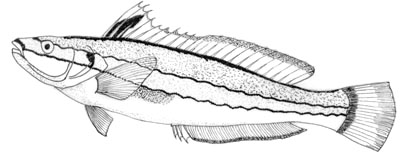Rainbow Wrasse (Coris Julis)

Latin name: Coris julis
Common name: Rainbow wrasse
In other languages: E: Julia, F: Girelle, D: Meerjunker
Class: Actinopterygii
Order: Perciformes
Family: Labridae
Genus: Coris
Habitat: This species is one of the few in this family that is both plentiful and easily seen around the shallows of the Mediterranean's rocky shoreline (from the surface down to 20m).
Reproduction: Breeds April to August; eggs planktonic.
Behaviour: A perpetual mover swimming in small mixed groups over defined areas in search of food (as with thalassoma pavo for feeding and seeing). At dusk they bury themselves in the sand, as do other family members. They have been seen to use this burying technique to avoid predators and to escape from protracted battles with other wrasse.
 Diet: Crustaceans and molluscs.
Diet: Crustaceans and molluscs.
Size: Common: 10 - 20cm; maximum: 25cm.
Colour: The male and female of this species were first regarded as two forms due to differences in colouring - one being called coris julis, the second being called coris giofredi. In their initial juvenile stages all rainbow wrasse wear the female livery (what was thought to be coris giofredi). The males develop away from these markings around their first year of life. Females always seem to outnumber males.
Did you know? The sex is reversal within this species (as it is with thalassoma pavo), they all at some time wear the livery of both!